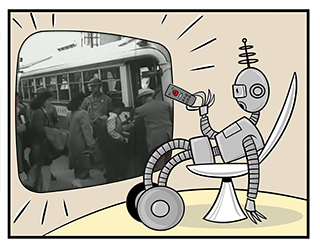Japanese Relocation

Between 1942 and 1945, the United States forcibly imprisoned approximately 115,000 Japanese residents in camps located in Arizona, California, Oregon, and Washington. Approximately two thirds of these people were American citizens. These prisons were governed by a newly created government agency known as the War Relocation Authority (WRA).
Four decades after the war ended, the Commission on Wartime Relocation and Internment of Civilians determined “there had been no military justification for the exclusion and noted that no Japanese Americans had been convicted of spying or sabotage.”1
In 1976, President Ford formally apologized, describing the “uprooting of loyal Americans” as an “undignified setback to fundamental American principles.” In 1988, President Ronald Reagan signed into law the Civil Liberties Act which paid $20,000 to more than 100,00 surviving victims.
Acknowledging that “no payment can make up for those lost years,” President Reagan stated explained that the legislation was about honor, not property. “For here we admit a wrong,” he added, “here we reaffirm our commitment as a nation to equal justice under the law.” 2
Contemporary historians view the mass internment of Japanese citizens as one of the worst human rights violations in the history of the United States, but the policy was popular with some Americans in the wake of Pearl Harbor. It is also important to note that Americans were bombarded with racist messages depicting Japanese people as untrustworthy and menacing.
For example, the editors of the Los Angeles Times defended the policy in 1943, writing that:
“As a race, the Japanese have made for themselves a record for conscienceless treachery unsurpassed in history. Whatever small theoretical advantages there might be in releasing those under restraint in this country would be enormously outweighed by the risks involved.” 3
In another editorial, the Los Angeles Times mocked those who criticized living conditions in the camps, arguing:
“The Japs in these centers in the United States have been afforded the very best of treatment, together with food and living quarters far better than many of them ever knew before, and a minimum amount of restraint. They have been as well fed as the Army and as well as or better housed.” 4
In February 2017, the Los Angeles Times apologized for the lasting shame of these newspaper editorials, reminding readers that “even in times of stress and fear, we need to keep a firm grip on our core values and bedrock principles.” 5
This historical background helps to establish the context for the film Japanese Relocation (1942). In this ten-minute documentary produced by the Office of War Information, Milton Eisenhower attempts to explain the government’s rationale for this mass internment.
“Neither the army nor the War Relocation Authority relish the idea of taking men, women, and children from their homes, their shops and their farms,” says Eisenhower. “So the military and civilian agencies alike determined to do the job as a democracy should, with real consideration for the people involved.”
As you watch this video, think about the concepts you’ve read about elsewhere on Propaganda Critic. What propaganda techniques and logical fallacies, if any, can you identify?
References
1 Paul Thornton (2017, February 25) “In 1942, we favored Japanese internment. Shame on us.” Los Angeles Times.
2 Ronald Reagan (1988, August 10) “Remarks on signing the bill providing restitution for the wartime internment of Japanese-American civilians.” Archived as a result of the heroic work of Gerhard Peters and John T. Wooley, The American Presidency Project.
3 Editorial Board (1943, April 22) “Stupid and dangerous.” Los Angeles Times.
4 Editorial Board (1942, December 8) “Kindness to alien Japs proves poor policy.” Los Angeles Times.
5 Editorial Board (2017, February 19) “75 years later, looking back at The Times’ shameful response to the Japanese internment.” Los Angeles Times.
